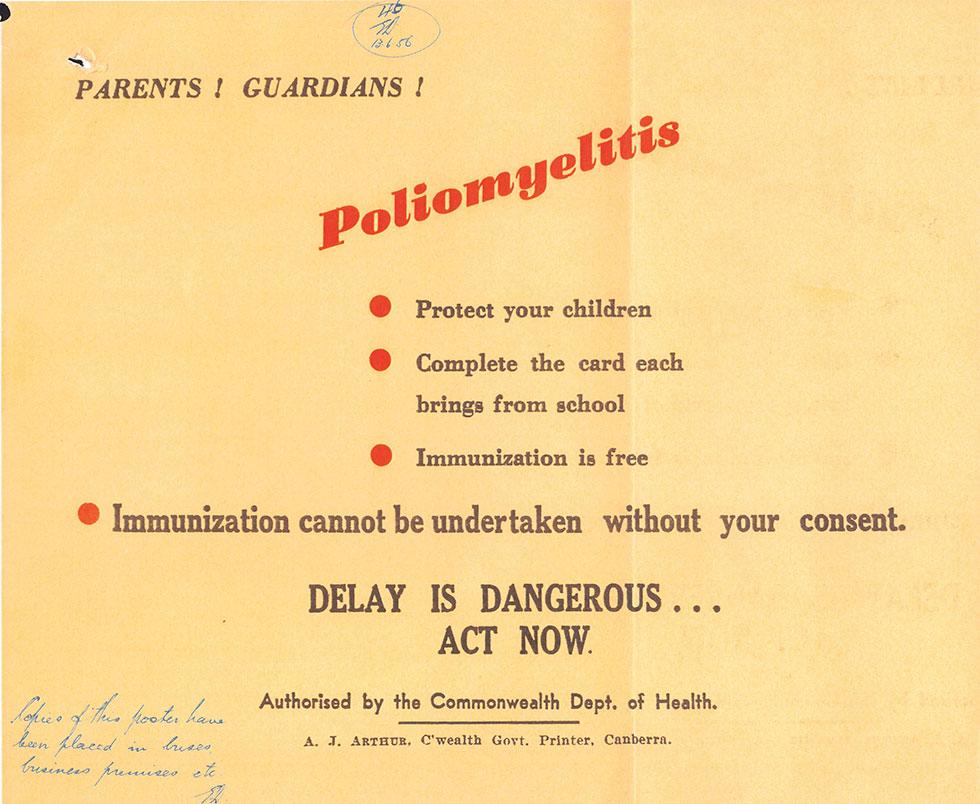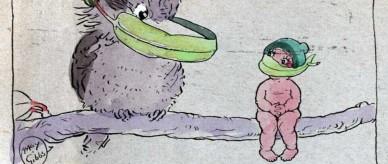


This record is a campaign poster from 1956 produced by the Australian Government Department of Health. It encourages members of the Australian public to get the vaccine for poliomyelitis (polio).
Polio is a highly contagious virus. It impacts children most severely, sometimes causing permanent paralysis of all or part of the body – often the legs. It can also lead to death. From 1944 to 1954, polio was responsible for over 1000 deaths in Australia, and left many more people with permanent disabilities. This significant outbreak of the virus created fear and concern among the Australian population.
The polio vaccine promoted by this poster was manufactured in Australia by Commonwealth Serum Laboratories (CSL). CSL was established in 1916 when shipping shortages during the First World War forced Australia to begin making its own vaccines and similar products.
CSL began distributing polio vaccines across Australia in June 1956 – the year this poster was created. That same year, the federal government and all state governments undertook public health campaigns to promote the availability of the vaccine. This poster directly targeted parents, encouraging them to consent to free immunisations for their children. A handwritten note in the bottom left-hand corner of the poster states that ‘copies have been placed in buses, business premises, etc.'
25 million doses of the polio vaccine were manufactured and distributed by CSL. Many parents responded positively to the campaign and chose to vaccinate their children, while others decided to not give their consent. In 1964, 83% of New South Wales children had received the vaccine.
In October 2000, the World Health Organisation declared Australia and the rest of the Western Pacific region to be polio-free. The work of CSL contributed to this achievement.
Today, the National Immunisation Program enables Australian children to access a range of vaccinations free of charge. This program aims to protect Australian children from serious – and at time life-threatening – childhood illnesses and infections.
Related records
Related themes
Need help with your research?
Learn how to interpret primary sources, use our collection and more.



